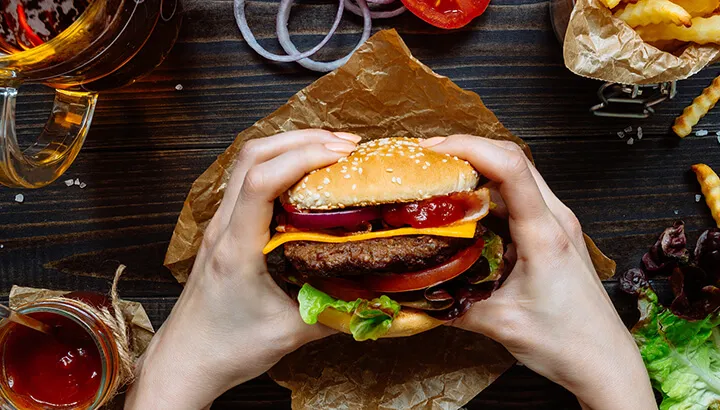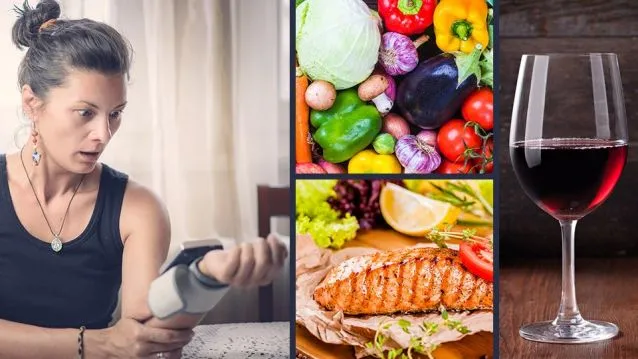The number of people in the United States living with high blood pressure is truly staggering. According to CDC statistics, one in three adults has high blood pressure — that’s about 75 million people. Another one in three is pre-hypertensive, which means that their blood pressure is higher than the normal range. If you don’t have high blood pressure yourself, there is a good chance that you at least know a few people that do.
While high blood pressure, also known as hypertension, is practically the norm in this country nowadays, that doesn’t mean it’s not dangerous. High blood pressure can increase your risk of heart attack and stroke, and may also be a factor in such health issues as osteoporosis, insomnia, vision loss, aneurysm and kidney failure. Scary stuff.
There’s a spot of good news, though. There is a lot you can do to control your blood pressure completely naturally. If you or someone you know has elevated blood pressure readings, try doing the following 11 things. You may just start to see your numbers going down, especially if you keep up these healthy habits over the long term.
Quit the sugar
A body of research has linked eating sugar to elevated blood pressure, as well as to many other ailments such as metabolic syndrome, obesity, diabetes, inflammation and certain cancers. The solution here may not be easy, but it is simple: quit eating refined sugar. Stick to the natural sugars found in fruits and veggies, and stop pouring the white stuff into your food.
If you need to sweeten certain recipes or beverages, use raw honey, organic coconut crystals, or maple syrup. Make sure to keep even these healthy sweeteners in moderation.
Stop eating processed foods

Processed foods often contain sugars, as well as a plethora of other additives, trans fats and fillers which may have an inflammatory and potentially blood pressure-elevating effect on the body. The drive-thru line is right out, as are those boxed, pre-cooked dinners. As a rule of thumb, if a boxed or packaged food item has more than five ingredients, or if you can’t pronounce any of them, it’s probably not worth eating.
Eat a plant-based diet
To keep your blood pressure levels within normal, healthy range, it’s important to get enough fruits and vegetables on your plate every day. Base your meals around a variety of fruits and vegetables, and try to get every color of the rainbow on your plates. Some research has found that people eating a primal, ancestral diet enjoy lower blood pressure levels, likely due to the lack of processed foods and the abundance of fresh produce. Also, check out these blood pressure-lowering foods to add to your meals.
Make sure you’re getting omega-3 fatty acids
You’ve probably already heard that omega-3 fatty acids are incredibly healthy for your heart and brain. One of the ways that omega-3s help to protect your cardiovascular system is by helping to keep blood pressure levels stable. Some research has found that eating omega-3 fatty acids can help to lower blood pressure levels. A few great sources include fatty fish (wild caught salmon, sardines, mackerel), flaxseeds and chia seeds.
Quit smoking
We all know smoking is terrible for our health, right? One of the ways cigarettes work their evil is by raising blood pressure levels. If you don’t smoke, don’t start. If you do smoke, make a plan to quit, and begin executing your plan as soon as possible. The sooner you quit, the brighter the future of your health will look. This goes for blood pressure and much more.
Moderate your alcohol intake
While a little bit of wine here and there may actually have benefits to your health, too much alcohol can be highly destructive in a number of ways, including raising your blood pressure levels. If you drink alcohol, keep it to one drink per day for women and two for men.
Move more
If you lead a sedentary lifestyle, you may be experiencing issues with high blood pressure. Exercise is a vitally important aspect of health, and one great benefit it can have is to keep your blood pressure levels in check. Aerobic exercise, the kind that gets your heart pumping, is especially important for this purpose. Aim for at least 30 minutes of moderate exercise every day. If you absolutely can’t do it every day, make three times per week a minimum.
Stand up more often
Many of us spend a large portion of our days (and evenings) sitting down, and this can have terrible consequences to our health. One way to combat these ill effects is to stand up as often as you can. Some research has found that simply standing up throughout the day can help to lower blood pressure levels… so don’t let yourself sit for too long before you stand.
Develop a healthy weight loss plan
Carrying around excess weight is one major risk factor for high blood pressure. If you’ve been trying to shed a few pounds, it’s crucial to make a plan. Center your plan around clean, healthy eating, exercise and finding fun non-eating-related things to do with your time. It can also help a lot to enlist the support of a few family members or close friends. Remember, just take it one day at a time. The slow and steady way is the best way to lose the weight and keep it off.
Get more quality sleep
Not getting enough sleep can make all of your body’s systems go awry. Take steps to make sure that you’re getting at least seven hours of quality sleep every night. If you need some ideas, check out these helpful tips.
Meditate
Feeling overloaded with stress and anxiety is another thing that puts you at risk for high blood pressure. If you’re feeling chronically stressed, it’s time to get some relaxation into your schedule. One great method is meditation. Meditating every day can make a world of difference in your stress levels. Other ideas include yoga, tai chi and deep breathing exercises.
Are there other natural methods that you use to keep your blood pressure levels in check? If so, please share your secrets!
— Tanya Mead

